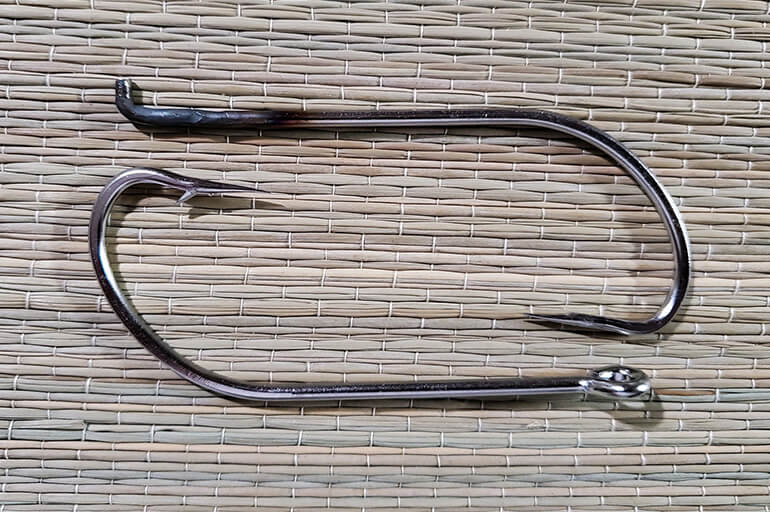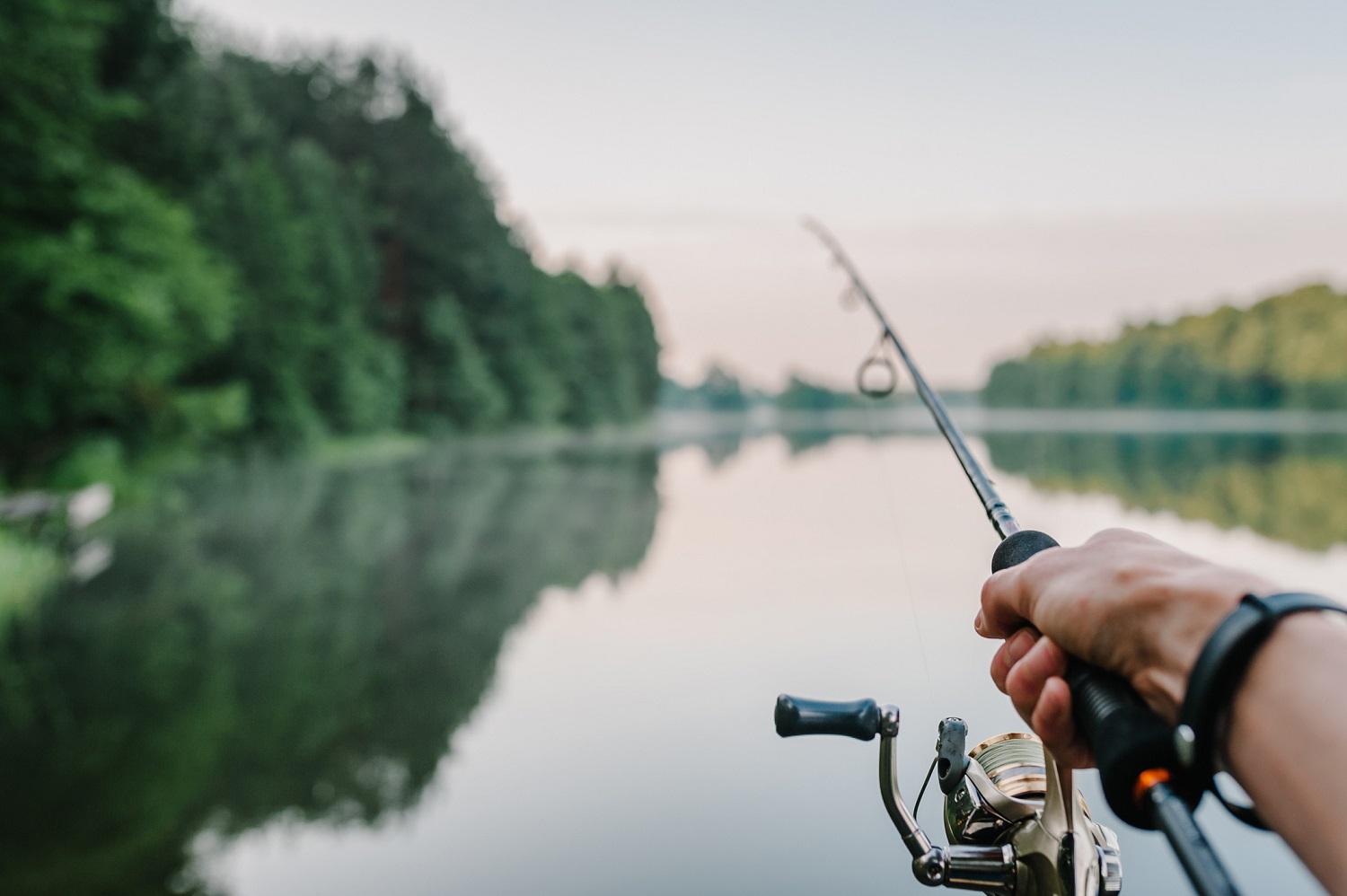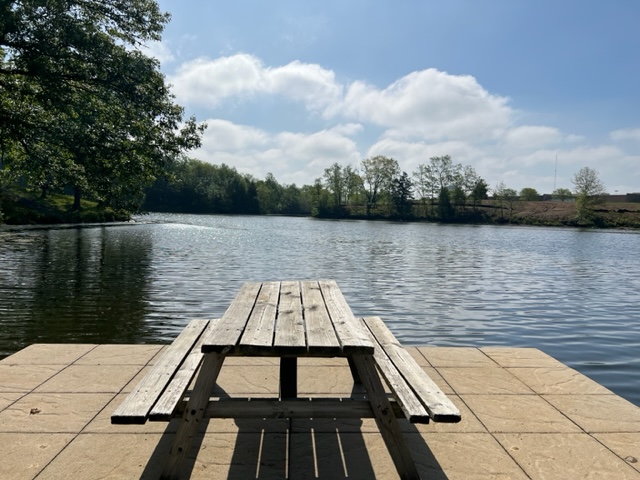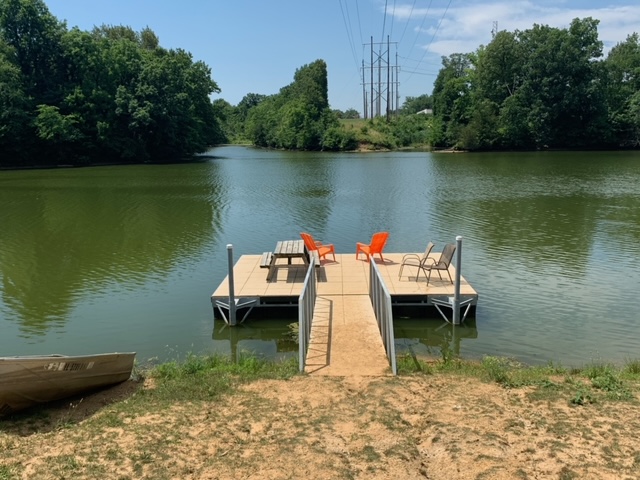Heres Some Camping Tips & Tricks at Your Fingertips
Our Kiefer Campground Blog is the information you need to make your next camping trip even more enjoyable. From RV and camping tips and tricks, to amazing campfire recipes, to advice on planning your next trip... the information below is here to help you. And please, feel free to comment and share your experiences, knowledge and favorite recipes. At Kiefer Campground, we are a family and all here to help each other enjoy the great outdoors to the fullest!

DIY Fishing Hooks
Creating your own fishing hooks can be a challenging DIY project, but it’s possible if you have the necessary tools and materials. Keep in mind that this process can be time-consuming and requires some skill in metalworking. Here are the basic steps to make DIY fishing hooks:
Materials and Tools:
- Wire: You’ll need a suitable wire material. Stainless steel or high-carbon steel are common choices.
- Pliers: Needle-nose pliers, round-nose pliers, and cutting pliers are essential.
- Vise: A vise will help you secure the wire during bending and shaping.
- File or Sandpaper: For smoothing and sharpening the hook point.
- Heat Source: If you’re working with stainless steel, you might need a heat source to soften the wire for shaping.
Steps:
- Select the Wire: Choose the appropriate wire diameter and material based on the type of fish you plan to catch. Thicker wire is typically used for larger fish.
- Cut the Wire: Use cutting pliers to cut a length of wire to start with. The length will depend on the hook size you want to create.
- Bend the Hook: Using needle-nose pliers, bend the wire to create the hook shape. You’ll want a straight section for the shank, a curved section for the bend, and a pointed end for the hook.
- Sharpen the Point: Use a file or sandpaper to sharpen the hook’s point. A sharp point is essential for catching fish effectively.
- Form the Eye: If you want to create a hook with an eye for attaching fishing line or a lure, use round-nose pliers to create the eyelet at the top of the hook.
- Harden and Temper the Hook (optional): If you’re using stainless steel, you may need to heat the hook with a propane torch and then quench it in water to harden it. This step can make the hook more durable, but it requires caution.
- Test Your Hook: Make sure the hook is sharp and strong. You can use a sharpening stone or file to further refine the point.
- Clean and Finish: Remove any sharp edges or burrs from the hook. A clean finish will prevent injury when handling it.
- Optional Coating: You can apply a corrosion-resistant coating or paint to your hook if desired.
Remember that creating your own fishing hooks can be a challenging task, and it may take some practice to perfect the art of making effective hooks. Additionally, some areas have regulations on the use of homemade hooks for fishing, so be sure to check local fishing regulations before using your DIY hooks.
Try this FIY out at your next visit to Camp Lakewood Campground.

Fishing Tips
Of course, I’d be happy to share some fishing tips with you! Fishing can be a relaxing and rewarding outdoor activity. Here are some tips to help you have a successful fishing experience:
Tips
- Choose the Right Equipment:
- Select the appropriate fishing rod and reel for your target species and fishing location.
- Use the right fishing line (monofilament, fluorocarbon, or braided) based on your fishing style and the fish you’re targeting.
- Make sure your hooks are sharp to improve your hookset success.
- Know the Fishing Regulations:
- Familiarize yourself with local fishing regulations, including catch limits, size restrictions, and fishing seasons.
- Obtain any necessary fishing licenses or permits before you start fishing.
- Understand the Habitat:
- Research the fishing location to understand the types of fish that inhabit the area and their preferred habitats.
- Learn about the feeding habits and behavior of the fish you’re targeting.
- Use Proper Bait and Lures:
- Choose bait or lures that mimic the natural prey of the fish you’re targeting.
- Consider using live bait, artificial lures, or a combination of both depending on the conditions and species.
- Practice Casting:
- Work on your casting accuracy and distance. Practice in an open area before heading to the water.
- Learn different casting techniques such as overhead casting, sidearm casting, and flipping/pitching.
- Pay Attention to Weather and Conditions:
- Fish are often more active during certain weather conditions. Overcast days and low light conditions can be ideal for fishing.
- Be aware of tides, moon phases, and water temperature as they can influence fish behavior.
- Be Patient:
- Fishing requires patience. Sometimes it takes time for the fish to become interested in your bait or lure.
- Avoid making sudden movements that might scare away fish.
- Practice Catch and Release:
- If you’re not keeping the fish you catch, handle them gently and release them properly to ensure their survival.
- Use proper tools for removing hooks to minimize stress on the fish.
- Stay Safe:
- Wear appropriate clothing and gear for the weather and environment.
- Be cautious of slippery surfaces, especially when fishing near water bodies.
- Learn from Others:
- If you’re new to fishing, consider fishing with experienced anglers or taking local fishing classes.
- Watch fishing videos, read books, and participate in online fishing forums to learn from other anglers.
Final Thoughts
Remember that fishing is not only about catching fish but also about enjoying the outdoors and the experience. Every fishing trip is a learning opportunity, so don’t get discouraged if you don’t catch anything on a particular day. With practice and persistence, you’ll improve your skills and have more successful outings.
Try these new tips and tricks on your next visit with us at Camp Lakewood Campground.

Safety While On the Water
Everyone enjoys a day on the lake with friends and family. Whether you are boating, kayaking, or swimming, being in the water is a great summer activity. While you are planning your fun day on the lake, remember to prioritize safety to prevent accidents and ensure an enjoyable experience. Here are some key ways to stay safe while enjoying water activities:
Safety Tips
- Learn to swim: Knowing how to swim is crucial for water safety. Take swimming lessons to develop essential skills and confidence in the water. Even if you are a competent swimmer, it’s always beneficial to continue improving your swimming abilities.
- Wear a life jacket: Always wear a properly fitting and Coast Guard-approved life jacket or personal flotation device (PFD), especially if you are not a strong swimmer or are participating in activities like boating, kayaking, or rafting. Ensure the life jacket fits properly and is appropriate for your scheduled activities.
- Check weather and water conditions: Before heading out, check the weather forecast and be aware of any potential storms, high winds, or adverse conditions. Similarly, understand the water conditions such as currents, tides, and waves, and ensure they are suitable for your activity and skill level.
- Buddy system: Whenever possible, engage in water activities with a buddy or in a group. Having someone nearby increases safety as they can provide assistance in case of an emergency and act as a support system.
- Follow rules and regulations: Familiarize yourself with the rules and regulations specific to the water activity and location you are in. This may include speed limits, right of way, navigation rules, and prohibited areas. Adhering to these guidelines ensures the safety of yourself and others.
- Stay within your limits: Be honest about your swimming ability and skill level, and choose activities that align with your capabilities. Avoid taking unnecessary risks or attempting activities that are beyond your expertise. Gradually challenge yourself and seek proper training if you want to advance your skills.
- Avoid alcohol and drugs: It’s essential to avoid consuming alcohol or drugs before or during water activities. These substances impair judgment, coordination, and reaction time, significantly increasing the risk of accidents and drowning.
- Be cautious near unfamiliar water bodies: When swimming or participating in activities in unfamiliar water bodies such as lakes, rivers, or the ocean, be cautious. These environments may have hidden hazards such as strong currents, underwater obstructions, or sudden depth changes. Be aware of warning signs and local advice.
- Stay hydrated and protected from the sun: Drink plenty of water to stay hydrated, especially when engaging in physical activities under the sun. Apply sunscreen to protect your skin from harmful UV rays, and consider wearing a hat and sunglasses for additional sun protection.
- Be prepared for emergencies: Learn basic water rescue techniques and CPR (Cardiopulmonary Resuscitation). Carry a whistle or signaling device to attract attention if needed. Have a basic first aid kit on hand and know how to use it.
Final Thoughts
Remember, water activities can be enjoyable and safe if proper precautions are taken. Prioritize your safety and that of others, be aware of your limitations, and always use common sense when participating in water-based activities. Camp Lakewood Campground has a wonderful lake that is great for all your planned activities. We hope to see everyone there this season!

Enjoying the Lake
We all love spending time at the lake during hot summer days. Kayaking and canoeing are both great ways to enjoy the water while camping. Here are some tips for kayaking and canoeing:
- Choose a campsite near water: Look for a campsite near a lake, river, or other body of water suitable for your activities. Camp Lakewood Campground is situated on Lake Pauline which is great for kayaking or canoeing.
- Rent your equipment: If you don’t have your own kayak or canoe, consider renting one from the campground. At our campground, we offer both kayak and canoe rentals.
- Check local regulations: Some areas may have restrictions on kayaking or canoeing or require permits. Be sure to check local regulations before hitting the water.
- Bring necessary equipment: Bring all necessary equipment, including a PFD, paddles, and other safety equipment. You may also want to bring a dry bag to keep your personal items safe and dry. Many of these items are available in our store. Check with us before you head out on the water!
- Prepare: Check the area you will be kayaking in before doing so and understand the area. No one wants to get lost on their adventure!
- Respect wildlife and the environment: Be respectful of the wildlife and environment around you. Avoid disturbing wildlife and follow Leave No Trace principles to minimize environmental impact.
Enjoy your time on the water! We look forward to seeing you all at Camp Lakewood Campground this summer!
Family owned and operated, Kiefer Campgrounds strive to offer you the best rates for a comfortable location with outstanding service, and spotless facilities. When you stay in one of our parks, you are no longer just a happy camper, but a part of our family! We are most certain you will enjoy your stay with us. Pick your favorite location and book your spot now before it’s too late! You’ll be happy you did!



